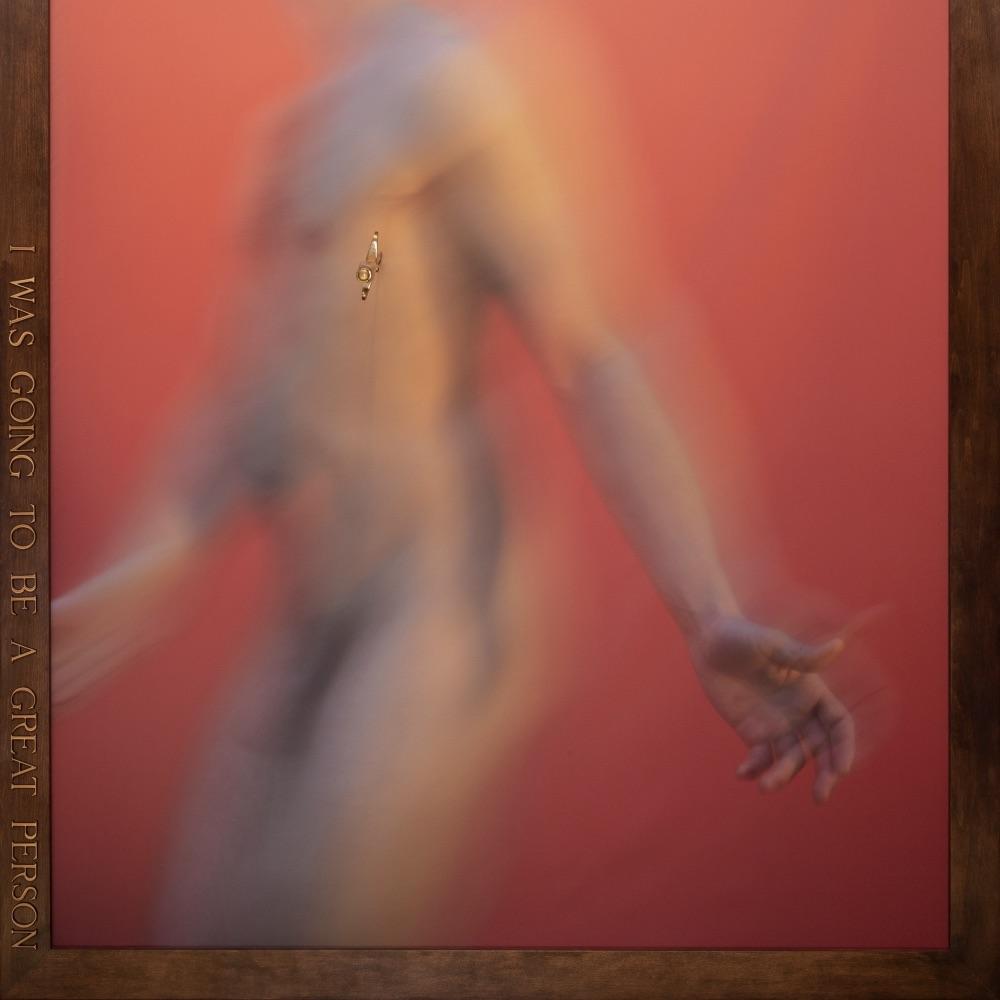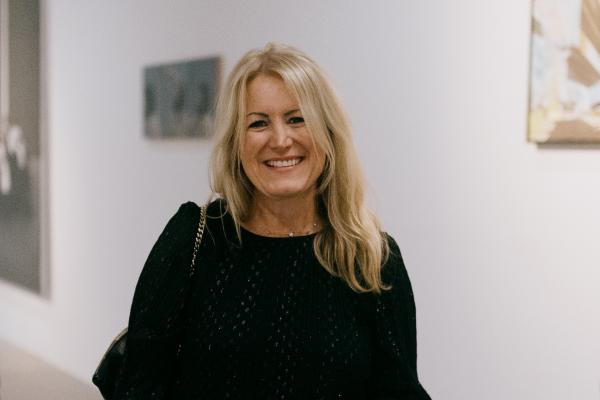
Jane Neal has established a reputation as a leading expert on the contemporary art scene in Eastern Europe and has curated critically acclaimed exhibitions in cities around the world, including Amsterdam, Berlin, Budapest, Copenhagen, Cluj, Dubai, London, Los Angeles, Milan, Mumbai, New York, Prague and Zurich. She was the first international curator to collaborate with artists, some of whom are leading figures in the contemporary art world, notably Adrian Ghenie - now considered one of the most sought-after artists in the world. In the Czech Republic, Jane has already participated in several exhibitions, including Disturbed Imagination (2017, GVUO) and Martin Eder's first domestic solo exhibition at the DSC Gallery in Prague (2021). The Telegraph is currently hosting her selection of the most interesting contemporary German painting in the form of German Painting Now, on the occasion of which this interview was conducted.
What started your interest in art?
I think it was the time my godfather and godmother took me to an exhibition at the National Gallery in London. I was 8 years old. I was looking at a still life by one of the Dutch masters and was intrigued by the tiny drops of water on the leaves. It was beautiful. I thought, how did he achieve that? I tried to paint it at home afterwards and of course I couldn't do it at all. I didn't know anything about oil painting, and I wouldn't have come anywhere near it with my watercolours. I think from that moment on I was completely enchanted and I painted all the time. Then I went on to study art and painting. When I graduated in 2001, there was no platform for great figurative painting in the UK, at least not without some ironic label. As if that had to be justified. That really bothered me. I used to say to myself that the claim that painting was dead and that there was no place for it in contemporary art was definitely not true. I decided to prove it. In 2005 I met amazing painters from Romania, the Czech Republic and Germany at the Prague Biennial. I was working as a journalist at the time. I was incredibly excited. I found painters there who were proud of the figure. Later I started working with some of them and we became friends. This exhibition set me on a different path in life. From then on, everything unfolded.
And how did you get into curating?
It kind of happened naturally. I used to teach, lecture and write for a living. I worked with a number of artists from Central and Eastern Europe who were of great interest to galleries in London, New York and Los Angeles. They didn't know them there until then. I was writing a lot for art magazines at the time. Mostly it was about art scenes that most journalists from London had never encountered. I was living in Oxford and I realised that commuting to London and writing about events there was a waste of time. Because there were already enough journalists there who didn't have to commute all the time. So instead I went to Berlin, Cluj, Budapest and Prague. In Western Europe and America, nobody knew artists from these cities (especially the artists from Cluj had not yet experienced international success). I started to receive offers to organize exhibitions about local artists. Suddenly I found myself in Zurich, New York and Austin, Texas. These artists were very fascinating to the galleries there. Not only because of their talent, but also because of their different way of looking at the world and their novel way of communicating through their work. People have simply never seen anything like it.
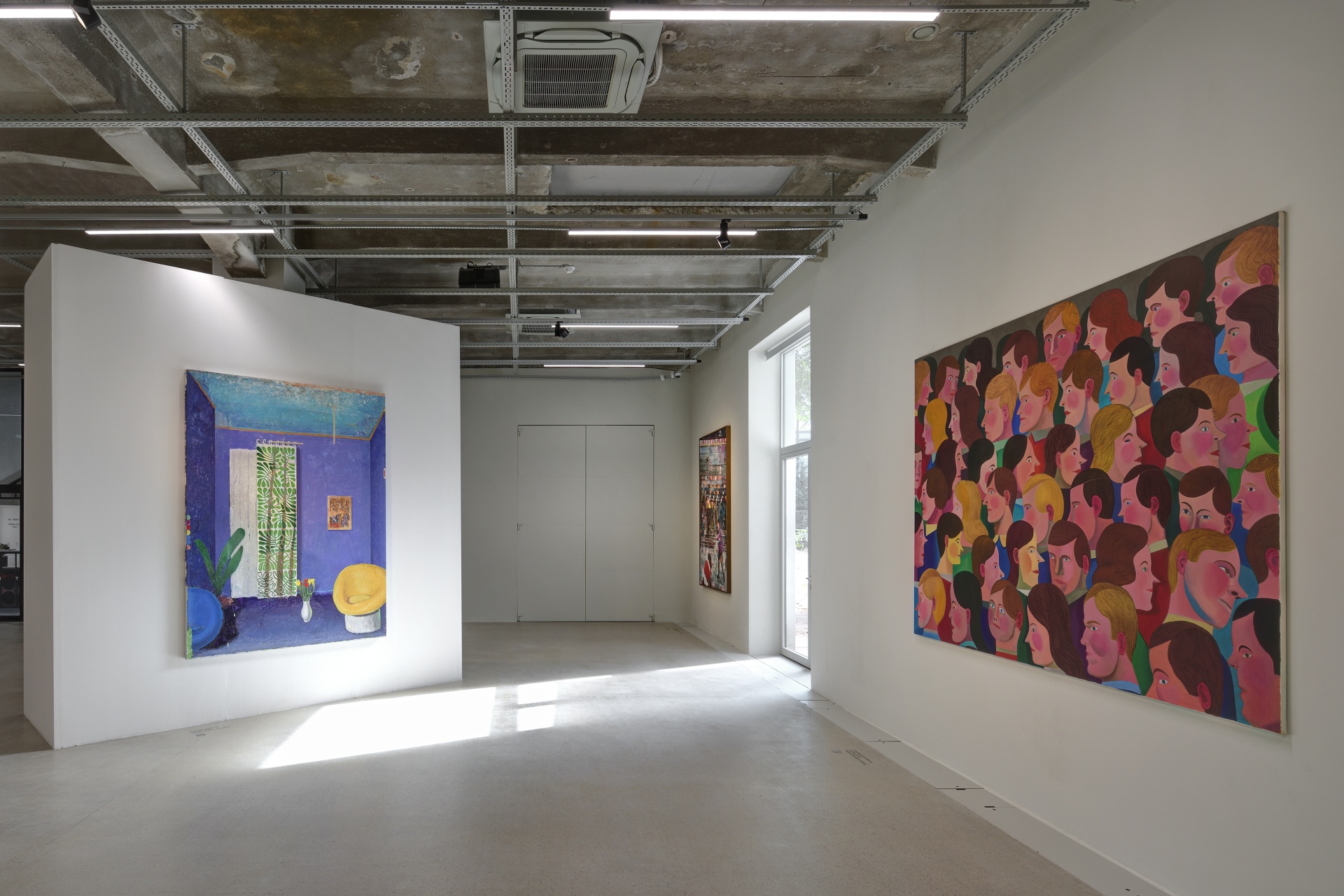
One of the subjects that is very close to your heart is German painting. How did you get into this subject?
I noticed that, Berlin is very friendly for figurative painting, so I started to work there a lot. In Germany, there is a generally strong group of artists who deal with this subject. I gravitated towards that city and the people in it. Berlin attracts a lot of different people. It's a very lively city with a young spirit, suitable for those who want to come up with something new. It also serves as a refuge for those who are running away from something or want to be accepted despite their differences. This was especially evident after the fall of the Berlin Wall in 1989, during the 1990s and at the beginning of the century. I think that German painting has come alive again. From the 20th century until today, there are many artists in Germany who work with the figure and with expressionism. Many Western capitals like New York, London and Paris were not nearly as open to figuration. This situation may be changing nowadays, but France still has a strong focus on conceptual art.
Do you think, then, that the focus on figurative painting is characteristic of Berlin?
It's more for the whole of Germany. I think that after the Second World War, art in Western Europe focused on abstraction and New York was the main destination for exhibitions. Paris, with its intellectual approach to contemporary art, was more focused on conceptual art. In Eastern Europe, where communism and socialism left their mark, art is still concerned with the figure. It was associated with socialist realism and functioned as a propaganda tool, which was not easy to repel. Western art, on the other hand, tried to distance itself from it. But I think it was a construct. It was not a true reflection of what artists really wanted to create. Now many German painters are dealing with modernism, going back a hundred years to complete a dialogue that was cruelly interrupted by the two world wars and the ensuing geopolitical divide. In this exhibition, too, one can find connections between German painters and early modern movements. Kristina Schuldt, for example, was strongly influenced by Fernand Léger. Jonas Burgert, on the other hand, has a connection with German expressionists such as Max Beckmann.
So is modernism seen as a kind of golden era in Germany? Do German painters share this view?
Let's look back to the Weimar Republic. Cities that had previously been under the rule of a strict regime evolved into something completely different. It was the era of the cabaret, the age of parties and carousing, and the question is whether this was partly because people expected that it would not last, because they sensed the growing danger of fascism in the air in Europe. I think the artists working in Berlin today have a similar feeling. We're slowly waking up from the dream of a golden era to the reality of gentrification, the remnants of covid-19 and the impact of climate change, where everyone is rethinking travel abroad, which will have a huge impact on multicultural cities like Berlin. The idea of an artist who is a visionary, who goes to parties all the time, who can go to the studio whenever he likes, who spends a lot of time there just hanging out and who has great connections, is wrong. That's not what a modern artist looks like. The reality is different. To satisfy the needs of galleries and various fairs, artists have some working hours and are very dedicated to their work. They work very hard. They don't just go out all the time to have fun. But the misconception still persists.
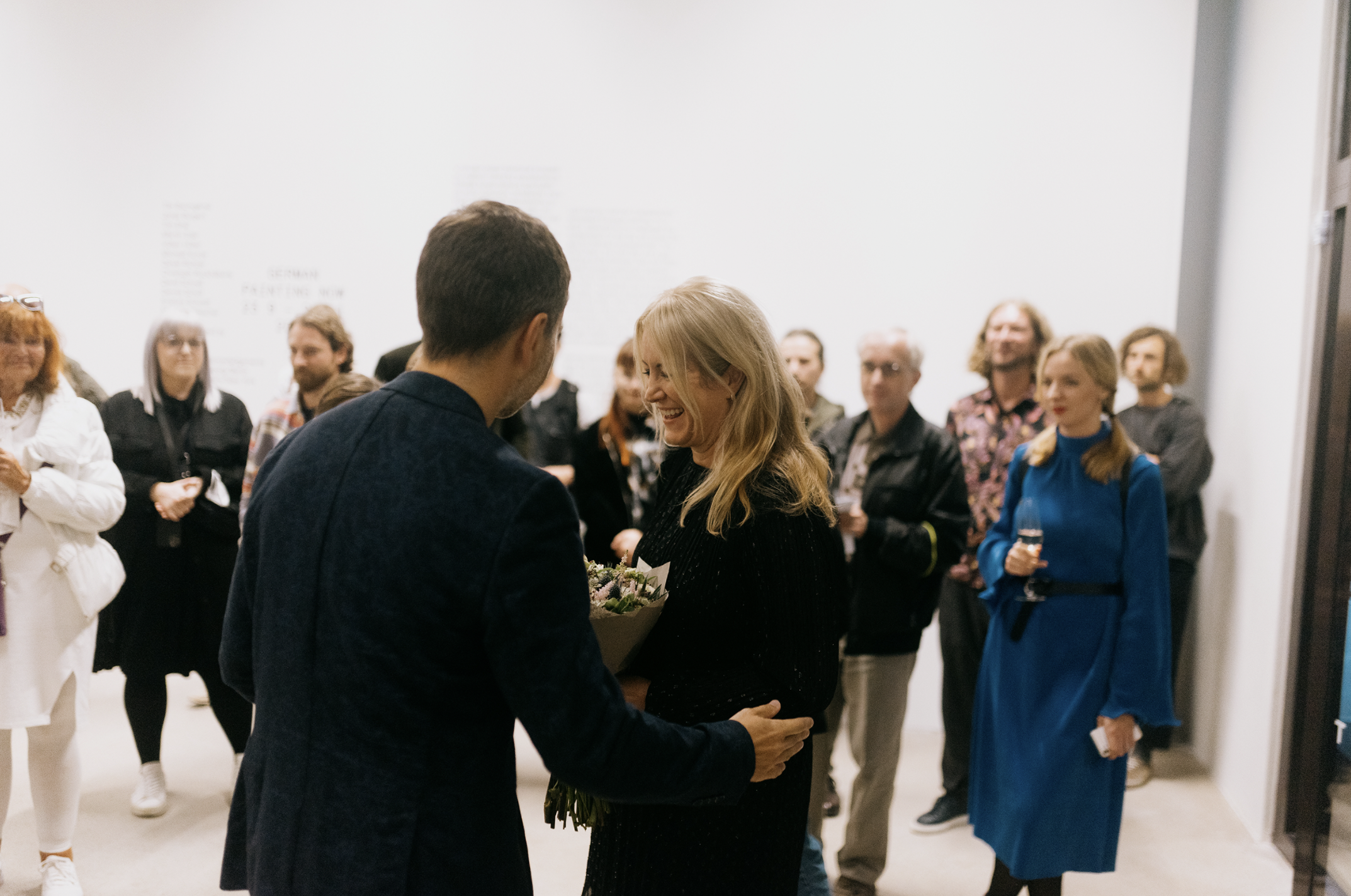
We usually think of Berlin and Leipzig in particular as the main centres of painting in Germany. Can you think of any other major areas that are well placed?
Leipzig became interesting at the beginning of the 21st century not only because of the artists there, but also because of the gallerists. One of them, for example, is Judy Lybke of Galerie Eigen+Art. Another important place is the great Leipzig Spinnerei, which attracts many collectors and journalists. Many artists have studios there, and there is also an academy. Leipzig is big enough, but not so big that you get distracted by the many parties there, as in Berlin, for example.
Hamburg is another of the interesting places where a very important school is located. There are also great galleries in Munich and Stuttgart, but Berlin is still the main magnet that attracts most artists. Interestingly, the number of collectors in Berlin is growing. This was not the case before. It was more just galleries. I think there are other reasons why Berlin is still an art mecca. The former division of Berlin created a unique environment. Everything is there twice - for example, the museums, which is an advantage for visitors but a disadvantage for the city and its spending. It's quite difficult to maintain.
There are cases of collaboration between Czech and German artists (Josef Bolf or Daniel Pitín). Do you notice any similarities between German and Czech painters?
The artists have always travelled and lived in different places. In the work of Daniel Pitín, one can observe a strong influence of German Expressionism. Cubism also has a great influence on Czech art history. There are a number of artists who have tackled how to depict space on a 2D surface and how to approach it differently from more than one perspective. How? This problem has never been completely solved... Both Matthias Weischer and Daniel Pitín have questioned the representation of space on a two-dimensional surface in different ways and are still struggling with this problem. I suppose they will be working on it all their lives.
So I think there are definitely similarities. There is no particular Czech or German school. Rather, it's similar influences and common concerns. Then of course there is the phenomenon of the internet. Today's artists have access to an unlimited number of images that they can use every day and use programs and collages to combine them in different ways. This is used by many other artists, not only in the Czech Republic and Germany.
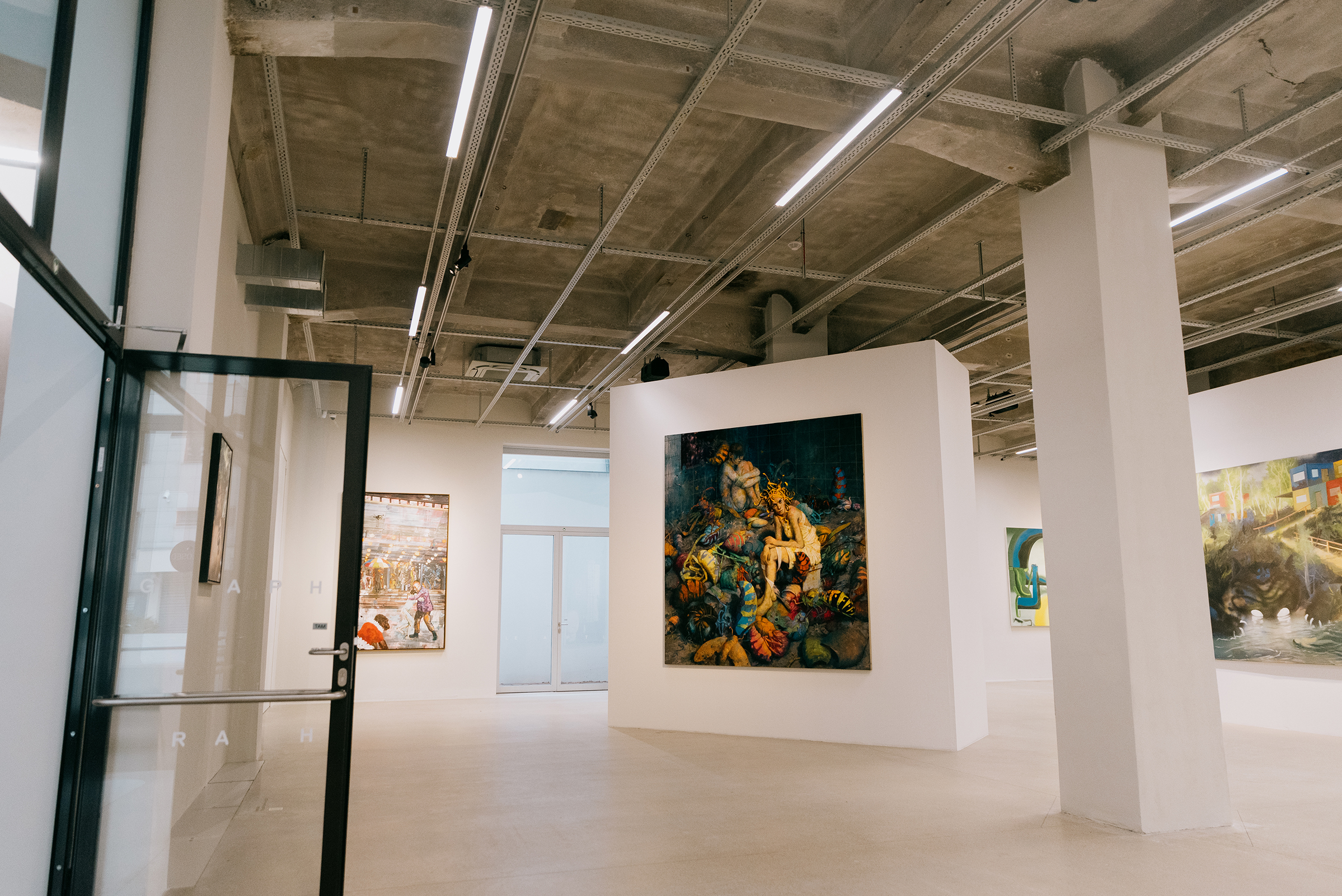
What is the biggest challenge for a curator these days?
The real challenge these days is to keep up with the times and to see interesting works that are distinctive and innovative in some way. It doesn't necessarily have to be popular or fashionable, but it should be relevant. The most important thing is to evaluate the work based on the professionalism of the artist, how they engage and what they bring to the overall artistic discourse. When you find someone who can create something truly extraordinary, especially in painting (which many used to find laughable), it's a real tribute. Paradoxically, I think photography has suffered more than painting in the long run, because anyone can be a photographer today. In fact, it's more exceptional and perhaps more authentic to create an image in which you can combine several different elements: imaginative, real, something you observe and something you've seen on the TV screen or in the cinema. Through the medium of paint, all of this can come together in one work of art. To grapple with the various stimuli that are constantly coming at us from all sides is a challenge even for the curator himself. For many artists today, their canvas is such a screen. This is quite an interesting development. Nowadays it is common to use an iPad or laptop in the studio instead of a sketchbook. Therein lies the challenge of today. How do we come to terms with the fact that the world is evolving so fast? Artists are changing their ways of working accordingly, and the question for us is... how do we cope?
Who would you like to collaborate with in the future?
I would love to collaborate with Paula Rego, that would be amazing. She is a very interesting and important Portuguese painter. I can also think of the American painter Eric Fischl. I would love to do an exhibition with him and with the painter Caroline Walker. That would be a great collaboration. Come to think of it, I would also like to organise an exhibition of women painters again. It would be great to work again with Kristina Schuldt (whose painting we also have in the German Painting Now exhibition) and other female painters. If I could wish for some artists who are unfortunately no longer alive, it would certainly be a huge honour to work with Louise Bourgeois. That would be really great.
By Jan Kudrna, Mira Macík, Šárka Nováková, Telegraph Gallery







